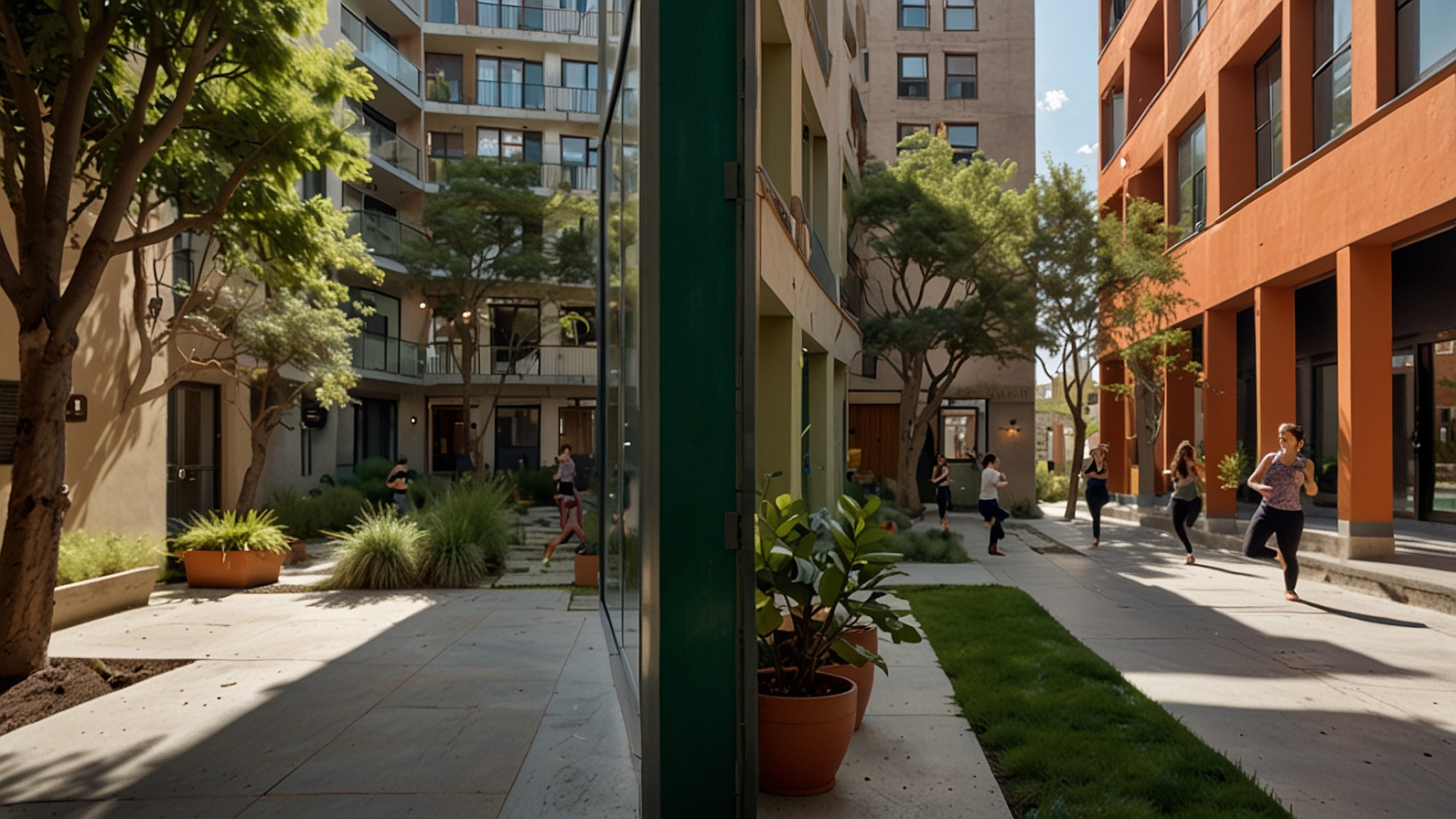Imagine an apartment building where the design doesn’t just prioritize square footage and luxury finishes, but your mental calm. Where the lobby smells of fresh earth, the courtyard is a certified wildlife habitat, and the community events are about yoga and mindfulness, not just cocktail parties. This isn’t a futuristic concept; it’s the present-day vision of New York-based developer Malia Manocherian.
While her last name is deeply rooted in New York City real estate, Malia has carved a unique path, reimagining what it means to be a property developer. She’s not just building spaces; she’s cultivating wellbeing. So, who is Malia Manocherian, and how is she changing the landscape of urban living? Let’s dive in.
It’s easy to see Malia Manocherian as simply a member of the prominent Manocherian real estate family. But that would be like calling a master chef just a home cook. She leverages that deep, generational knowledge of bricks and mortar as a foundation for something far more holistic. Her public profile is a fascinating blend of savvy business acumen and a genuine passion for human-centered design, sustainability, and mental health advocacy.
Think of her as a wellness-driven developer and civic philanthropist. Her work asks a compelling question: What if our buildings actively contributed to our health and happiness instead of just sheltering us? This philosophy makes her stand out in a crowded field, transforming her from a traditional landlord into a innovative thought leader.
Malia’s approach isn’t a single project or initiative. It’s a multi-faceted mission built on several key pillars that all work together.
Human-Centered Urban Design: This is the cornerstone. It means designing buildings and spaces with the human experience at the forefront. It’s about natural light, airflow, communal areas that encourage interaction, and biophilic design—incorporating natural elements like plants, water, and wood to reduce stress and improve cognitive function. It’s architecture that feels good to be in.
A Deep Commitment to Wellness and Mental Health: This is where her work truly diverges from the norm. Malia is a passionate advocate for mental wellbeing, often speaking openly about its importance. This isn’t just talk; it’s integrated into her projects. She has been involved with organizations like The JED Foundation, which works to protect emotional health and prevent suicide for teens and young adults. Her developments often feature dedicated quiet rooms, meditation spaces, and programming that supports residents’ mental and physical health.
Sustainability as a Standard, Not an Option: For a modern developer, being “eco-friendly” can sometimes feel like a marketing checkbox. For Malia, it’s a non-negotiable principle. Her projects emphasize green building materials, energy efficiency, and creating sustainable urban ecosystems. This could mean creating green roofs that manage stormwater and reduce the urban heat island effect or ensuring buildings are energy stars.
Philanthropy Woven into Business: Her charitable efforts are seamlessly connected to her professional work. She doesn’t just write checks; she invests in community wellbeing. This involves supporting arts programs, health initiatives, and educational projects that uplift the neighborhoods her buildings inhabit, creating a virtuous cycle of investment and improvement.
The Creative Counterpart: Art and Photography: Beyond the blueprints and business plans, Malia is also a creative. Her engagement with art and photography isn’t just a hobby; it’s a complementary venture that informs her perspective. It fuels her appreciation for beauty, detail, and the human story, all of which feed back into her mission to create more thoughtful and inspiring environments.
While specific project names are often under the umbrella of family-owned entities, her influence and philosophy are clear in their newer, wellness-oriented developments. You can see her principles in action in properties that feature:
- Ameneities for the Mind: Meditation rooms, silent libraries, and sound-proofed music practice rooms.
- Spaces for Connection: Rooftop gardens with vegetable patches, cozy cafés designed for conversation, and workshop spaces for community classes.
- Sustainable Features: Electric vehicle charging stations, high-performance insulation, and non-toxic, low-VOC paints and building materials.
Her public presence reinforces this. In interviews and profiles, she consistently steers the conversation toward wellbeing, community, and the profound responsibility developers have in shaping how people live and feel.
The impact of this approach is significant. It raises the bar for what tenants and buyers can and should expect from their living environments. It proves that profitability and purpose are not mutually exclusive. By creating spaces that reduce stress, foster connection, and respect the planet, Malia Manocherian is providing a new blueprint for the future of urban development—one that values human capital as much as financial capital.
| Traditional Developer Approach | Malia Manocherian’s Approach |
|---|---|
| Focus on maximizing square footage and unit count. | Focus on maximizing wellbeing and quality of life. |
| Amenities as luxury checkboxes (e.g., granite counters). | Amenities as tools for health (e.g., meditation rooms, green spaces). |
| Sustainability as a cost or marketing feature. | Sustainability as a core, non-negotiable principle. |
| Community as a buzzword. | Community as an actively cultivated resource. |
| Philanthropy separate from business operations. | Philanthropy integrated into the business model. |
- Buildings Can Be Healing: Our environments have a massive impact on our mental and physical health. Design choices can either contribute to stress or alleviate it.
- Wellness is a Smart Investment: Creating spaces that people genuinely love to live in isn’t just good ethics; it’s good business. It leads to higher retention rates and more vibrant communities.
- Sustainability is Table Stakes: For the next generation, eco-friendly features won’t be a luxury; they’ll be a baseline requirement.
- Legacy Can Be Redefined: You can honor a family legacy while also innovating and putting your own unique stamp on it.
- Bring Your Whole Self to Work: Your passions outside of work—whether art, photography, or advocacy—can profoundly enrich your professional output.
Malia Manocherian’s story is an inspiring reminder that any industry can be infused with a greater purpose. It challenges us all to think about how we can integrate wellbeing into our own professions and lives.
What does your ideal, wellness-focused living space look like? What one feature would make you feel happier and healthier at home? Share your ideas!
You May Also Read: Fran Candelera: The Digital Artist Redefining Creativity Online
What is Malia Manocherian known for?
She is best known as a New York-based real estate developer and philanthropist who focuses on blending property development with principles of wellness, sustainability, and human-centered design. She leverages her family’s real estate background to create projects that prioritize mental health and community wellbeing.
How is Malia Manocherian different from other developers?
Unlike many traditional developers who focus primarily on profit and square footage, Malia Manocherian adopts a holistic, wellness-driven approach. Her work emphasizes how buildings can actively improve tenants’ lives through biophilic design, mental health amenities, and sustainable practices.
What companies or projects is she involved with?
While many projects are under the umbrella of her family’s real estate holdings, her specific influence is seen in developments that incorporate green roofs, meditation spaces, community gardens, and eco-friendly materials. She is also actively involved with philanthropic organizations like The JED Foundation.
What is Malia Manocherian’s background?
She comes from the Manocherian family, which has a significant history in New York City real estate. She built upon that foundation by integrating her passions for wellness, art, and philanthropy into the business, creating a unique niche for herself.
Why is she involved in mental health advocacy?
She speaks openly about the importance of mental wellbeing, believing it is a critical component of a healthy life. This personal passion directly influences her professional work, leading her to incorporate design elements and amenities that support mental health in her buildings.
Does she do anything outside of real estate?
Yes, she is also a creative who engages in art and photography. This creative pursuit complements her development work by informing her aesthetic sense and her understanding of the human experience within a space.
How can I learn more about her work?
While she maintains a relatively low public profile, insights into her philosophy and projects can be found through various real estate publications, wellness industry features, and interviews where she discusses the future of urban design.

